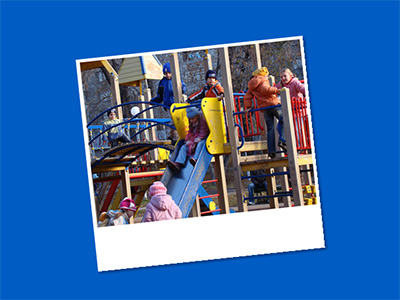 |
Course 17: Developing and Implementing Effective School-Age Outdoor Environments and Interest Areas |
2.00 |
School-age children need daily opportunities to exercise, relax, and participate in a wide range of outdoor activities. The hours children spend in after school programs are often the best hours of the day for getting fresh air and enjoying the out of doors while it is still daylight. School-age programs can provide safe, secure settings where children can enjoy the out of doors. Even if outdoor space is limited, regular participation in a wide variety of physical activities in the open air can help children develop healthy exercise habits that will last a lifetime. |
 |
Developing Effective Outdoor Environments and Interest Areas (Collection) |
2.00 |
School-age children need daily opportunities to exercise, relax, and participate in a wide range of outdoor activities. The hours children spend in after school programs are often the best hours of the day for getting fresh air and enjoying the out of doors while it is still daylight. School-age programs can provide safe, secure settings where children can enjoy the out of doors. Even if outdoor space is limited, regular participation in a wide variety of physical activities in the open air can help children develop healthy exercise habits that will last a lifetime. |
 |
Developing and Implementing Effective School-Age Outdoor Environments and Interest Areas |
2.00 |
School-age children need daily opportunities to exercise, relax, and participate in a wide range of outdoor activities. The hours children spend in after school programs are often the best hours of the day for getting fresh air and enjoying the out of doors while it is still daylight. School-age programs can provide safe, secure settings where children can enjoy the out of doors. Even if outdoor space is limited, regular participation in a wide variety of physical activities in the open air can help children develop healthy exercise habits that will last a lifetime. |
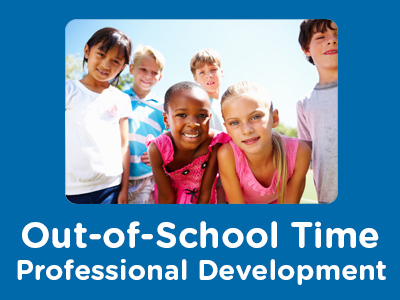 |
Developing Effective Outdoor Environments and Interest Areas: Assessing Space and Planning Activities |
1.00 |
School-age children need daily opportunities to exercise, relax, and participate in a wide range of outdoor activities. The hours children spend in after school programs are often the best hours of the day for getting fresh air and enjoying the outdoors while it's still daylight. School-age programs can provide safe, secure settings where children can enjoy the outdoors. In this course, we will explore how to assess space and plan activities in outdoor environment and interest areas. |
 |
Developing Effective Outdoor Environments and Interest Areas: Moving Indoor Interest Areas Outside |
1.00 |
School-age children need daily opportunities to exercise, relax, and participate in a wide range of outdoor activities. The hours children spend in after school programs are often the best hours of the day for getting fresh air and enjoying the outdoors while it's still daylight. School-age programs can provide safe, secure settings where children can enjoy the outdoors. In this course, we will explore strategies for moving indoor interest areas into outdoor environments. |
 |
Sharing Information with Parents and Other Professionals (Collection) |
2.00 |
School-age children work on many important developmental tasks during their out-of-school hours. One of the important responsibilities of OST staff is to help parents stay in touch with how their children are growing and developing during program hours. In addition to parents, professionals who work with children in other settings are often interested in learning how children spend their time when they are not at home or school.
Portfolios are excellent tools for bringing children’s experiences in OST programs to life for parents during planned parent conferences. They are also valuable tools for sharing helpful information about children with other professionals. |
 |
Course 36: Sharing Information with Parents and Other Professionals |
2.00 |
School-age children work on many important developmental tasks during their out-of-school hours. One of the important responsibilities of OST staff is to help parents stay in touch with how their children are growing and developing during program hours. In addition to parents, professionals who work with children in other settings are often interested in learning how children spend their time when they are not at home or school.
Portfolios are excellent tools for bringing children’s experiences in OST programs to life for parents during planned parent conferences. They are also valuable tools for sharing helpful information about children with other professionals. |
 |
Sharing Information with Parents and Other Professionals |
2.00 |
School-age children work on many important developmental tasks during their out-of-school hours. One of the important responsibilities of OST staff is to help parents stay in touch with how their children are growing and developing during program hours. In addition to parents, professionals who work with children in other settings are often interested in learning how children spend their time when they are not at home or school.
Portfolios are excellent tools for bringing children’s experiences in OST programs to life for parents during planned parent conferences. They are also valuable tools for sharing helpful information about children with other professionals. |
 |
Sharing Information with Parents and Other Professionals: Policies & Conferences |
1.00 |
School-age children work on many important developmental tasks during their out-of-school hours. One of the important responsibilities of school-age care staff is to help parents stay in touch with how their children are growing and developing during program hours. In this course, we will explore policies and conferences. |
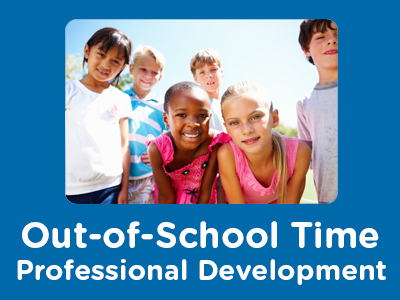 |
Sharing Information with Parents and Other Professionals: Communication Tools |
1.00 |
School-age children work on many important developmental tasks during their out-of-school hours. One of the important responsibilities of school-age care staff is to help parents stay in touch with how their children are growing and developing during program hours. In this course, we will explore tools used to communicate with families about their children. |
 |
Course 11: Building Relationships with School Personnel |
2.00 |
School-age programs and schools share a mutual goal of supporting the growth, development, and learning of school-age children. Over 50% of all school-age programs nation-wide are housed in school facilities. When school-age programs are housed in school facilities, it is essential for staff in school-age programs to establish and maintain a positive relationship with school personnel. This makes it possible for schools and programs to work together to support the needs of the whole child. Staff can develop successful partnerships with school personnel by cultivating an understanding of the needs, interests, and goals of school personnel and using effective strategies, tools, and systems to build a spirit of positive collaboration and communication. |
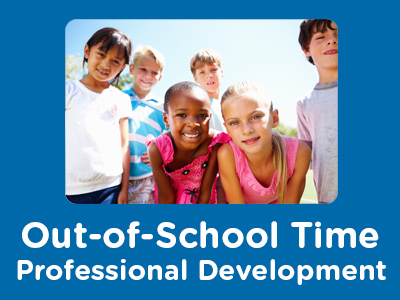 |
Building Relationships with School Personnel |
2.00 |
School-age programs and schools share a mutual goal of supporting the growth, development, and learning of school-age children. Over 50% of all school-age programs nation-wide are housed in school facilities. When school-age programs are housed in school facilities, it is essential for staff in school-age programs to establish and maintain a positive relationship with school personnel. This makes it possible for schools and programs to work together to support the needs of the whole child. Staff can develop successful partnerships with school personnel by cultivating an understanding of the needs, interests, and goals of school personnel and using effective strategies, tools, and systems to build a spirit of positive collaboration and communication. |
 |
Developing Activities That Support Character Development and Promote Social Interaction |
2.00 |
School-age programs can provide children with many opportunities to work on character development. Staff who are knowledgeable about character development can create program experiences that help individual children bring out their best inner qualities as they interact with peers and adults outside the family. Staff can also use this knowledge to help children make positive contributions to the program, their school, their community, and to the world beyond their community. |
 |
Combating Sexual Harassment in the Workplace (NY) (Spanish) Combatir el Acoso Sexual en el Lugar de Trabajo |
1.00 |
Según la ley estatal vigente en octubre de 2018, todos los empleadores de Nueva York deben establecer una política de prevención del acoso sexual que incluya capacitación anual, de conformidad con la Sección 201-G de la Ley Laboral.
Este curso fue creado por CypherWorx en base a la actualización de 2023 de los materiales de capacitación desarrollados por el Departamento de Trabajo y la División de Derechos Humanos del Estado de Nueva York, y está diseñado para cumplir o superar los estándares requeridos por la ley estatal. |
 |
Knowing My Personality and Emotional Intelligence |
1.00 |
Self-awareness and self-regulation are key aspects of emotional intelligence, and a significant part of what we need to know and regulate is our personality style, which is embedded with inherent strengths and weaknesses. Participants are invited to take the Educator Assessment of Social and Emotional Learning (EASEL), a powerful tool that increases emotional intelligence and resilience in educators by helping them understand their personality style. This online assessment was developed by Dr. Adam Sáenz and his colleagues in the College of Education at Texas A&M University. Based on my personality style, what are my relational strengths? My weaknesses? Which students will be easiest and most difficult for me to connect with? What biases might I be bringing into the classroom? |
 |
Employment |
1.50 |
Several factors can contribute to someone being without work. These factors can be societal—a result of community circumstances, or subjective—due to individual traits. This course will explore how self-defeating thoughts and other external factors contribute to periods of unemployment.
Additionally, this course will dive into the process of breaking through these barriers to become employed and the skills required to maintain a job. |
 |
Communications for the Fire and EMS Supervisor |
1.00 |
So much of what we do in Fire and EMS is problem-solving. This CME is a fantastic means for managers to learn about the very technical field of Radio Communications. If you are a manager that is in the position of problem-solving, you will want to take time to review this material. Three experienced professionals succinctly discuss what you will need to know when preparing for a problem or reacting to problems in the Radio Communications realm. Final Exam: This multiple-choice exam is designed to test your knowledge of the material you just reviewed. You have two attempts to gain an 70% or higher on this exam. Please take your time and answer each question carefully. |
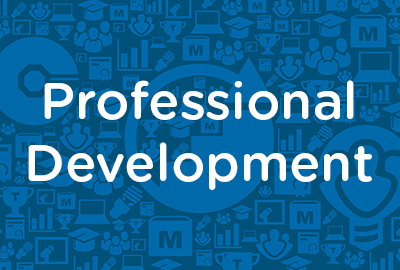 |
Interviewing Skills: Handling and Conducting |
1.00 |
Some interviewees demand a particularly focused and skillful use of interviewing techniques. Your ability to handle talkative, uncommunicative, nervous, or inexperienced candidates is important in order to get an accurate assessment of the candidate’s abilities. If you develop ways of handling various types of interviewees before the interview begins, you’ll be able to encourage them to respond positively and share information. You’ll also avoid the mistake of eliminating candidates on the basis of value judgments or preconceptions.
An interview is a two-way conversation designed to gather information about, and provide information to the candidate, so you both can decide on the fit between the position, the organization, and the candidate. Good interviews flow smoothly when both the interviewer and the candidate take part in an information exchange.
In this course you will learn to: handle an interview by developing an understanding of the various types of candidates, and conduct an interview by following a specific structure and using effective communication techniques. |
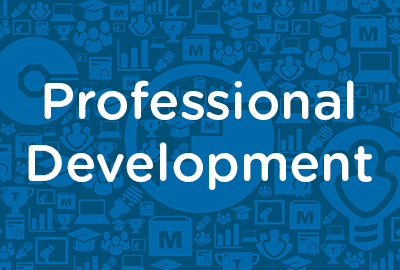 |
Interviewing Skills: Handling and Conducting (Instructor Guide) |
1.00 |
Some interviewees demand a particularly focused and skillful use of interviewing techniques. Your ability to handle talkative, uncommunicative, nervous, or inexperienced candidates is important in order to get an accurate assessment of the candidate’s abilities. If you develop ways of handling various types of interviewees before the interview begins, you’ll be able to encourage them to respond positively and share information. You’ll also avoid the mistake of eliminating candidates on the basis of value judgments or preconceptions.
An interview is a two-way conversation designed to gather information about, and provide information to the candidate, so you both can decide on the fit between the position, the organization, and the candidate. Good interviews flow smoothly when both the interviewer and the candidate take part in an information exchange.
In this course you will learn to: handle an interview by developing an understanding of the various types of candidates, and conduct an interview by following a specific structure and using effective communication techniques.
This Instructor's Edition of this course includes notes and suggestions to assist you in presenting the material, whether in an in-person classroom setting, or as an instructor-led online or distance-learning course. It also provides you with the answers to questions found in mid-lesson activities, as well as in the quiz that concludes the course. |
 |
Developing Children's Emergent Literacy Skills (CDA 2) |
2.00 |
Spark curiosity, and inspire imagination: Watch young minds blossom as they build pre-reading and writing skills! This course equips you with playful, effective approaches to foster essential emergent literacy skills, setting the stage for future reading and writing success. |
 |
Workplace Basics |
1.00 |
Starting a new job is intimidating enough, even more so when you are confused about how the basic workplace functions. This course will take you through the most essential things to know. This way, you can become the most successful worker possible. |
 |
STEM and Learning Standards |
1.00 |
STEM is an intentional, integrative approach to teaching and learning that can occur across all knowledge areas; it is not a specific curriculum.
The STEM approach focuses on providing opportunities for students to explore and develop a comprehensive set of concepts, competencies, and thinking skills.
STEM competencies include a vocabulary rich in the language of science, technology, engineering and math—words like hypothesis, gravity, buoyant, balance, temperature, and battery. STEM competencies also include basic principles of engineering, like problem-solving and planning; of science, like experimentation and observation; of technology, like using tools to complete both a task and solve real world problems; and of math by recognizing that basic principles of math are part of everyday activities, like comparing and contrasting, counting, and dividing a whole to create equal parts.
Course Learning Objectives:
Demonstrate how learning standards for early childhood promote the development of STEM concepts, competencies, and thinking skills. |
 |
STEM and Supportive Practices |
1.00 |
STEM is an intentional, integrative approach to teaching and learning that can occur across all knowledge areas; it is not a specific curriculum. The STEM approach focuses on providing opportunities for students to explore and develop a comprehensive set of concepts, competencies, and thinking skills.
In this course, we’ll see how the Supportive Practices found in Learning Standards for early childhood promote the development of STEM concepts, competencies, and thinking skills.
Course Learning Objective:
- Use the supportive practices to promote the development of STEM concepts, competencies, and thinking skills. |
 |
STEM in Early Childhood (CDA 2, 3, and 8) |
3.00 |
STEM is an intentional, integrative approach to teaching and learning that can occur across all knowledge areas; it is not a specific curriculum. The STEM approach focuses on providing opportunities for students to explore and develop a comprehensive set of concepts, competencies, and thinking skills. STEM competencies include a vocabulary rich in the language of science, technology, engineering and math—words like hypothesis, gravity, buoyant, balance, temperature, and battery. STEM competencies also include basic principles of engineering, like problem-solving and planning; of science, like experimentation and observation; of technology, like using tools to complete both a task and solve real world problems; and of math by recognizing that basic principles of math are part of everyday activities, like comparing and contrasting, counting, and dividing a whole to create equal parts.
This course is also designed to be part of a Child Development Associate (CDA) Credential™ curriculum. It covers Subject Area 2: Advancing Children’s Physical and Intellectual Development, Subject Area 3: Supporting Children’s Social and Emotional Development and Subject Area 8: Understanding Principles of Child Development and Learning. |
 |
Managing Stress |
1.00 |
Stress is a normal part of life experiences. Sources of stress vary from person to person. What is stressful to one person may not be stressful to another. This course will help you identify sources of stress and develop unique techniques and strategies for minimizing and alleviating the adverse effects of stress. |


























